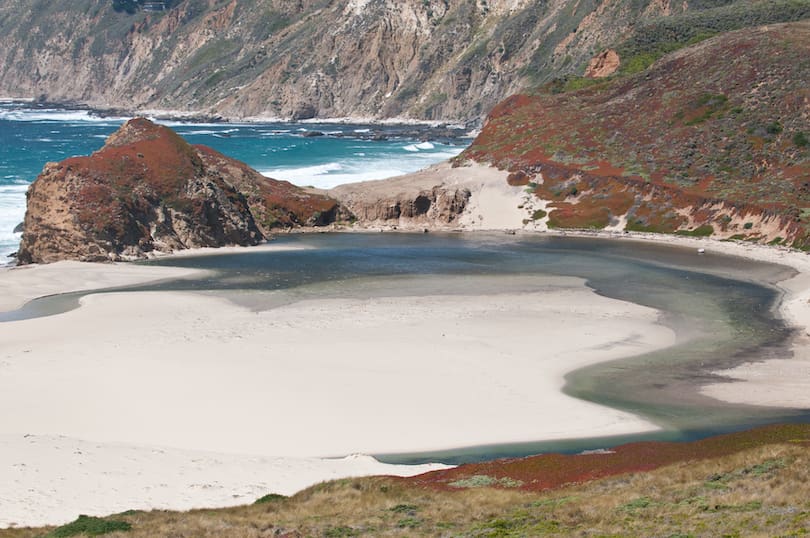Greece, a country renowned for its ancient history and cultural heritage, also boasts some of the most breathtaking natural landscapes in the world. From idyllic islands to majestic mountains, Greece offers a diverse range of regions that capture the hearts of visitors. In this article, we will explore the 13 most beautiful regions of Greece, each with its own unique charm and allure. So pack your bags and get ready for an unforgettable journey through the stunning landscapes of Greece.
Santorini
Santorini, often regarded as a postcard-perfect destination, is a volcanic island located in the Aegean Sea. Its dramatic landscape is characterized by rugged cliffs adorned with iconic white-washed buildings overlooking the azure waters. The island’s most famous town, Oia, is a photographer’s paradise, known for its narrow streets, blue-domed churches, and stunning sunset views. Whether you’re exploring the ancient ruins of Akrotiri or relaxing on the black sand beaches, Santorini promises an enchanting experience.
Mykonos
Mykonos, the epitome of glamour and beauty, is a Greek island known for its lively atmosphere and breathtaking beaches. The island’s vibrant nightlife and luxurious resorts attract visitors from all over the world. The charming old town, with its whitewashed buildings and colorful bougainvillea, invites exploration through its maze-like streets. Mykonos is also home to some of the most stunning beaches in Greece, where crystal-clear waters meet golden sands, creating a paradise for sun-seekers.
Meteora
Meteora, a UNESCO World Heritage site, is a mesmerizing region that defies gravity. It is famous for its monasteries perched atop towering rock formations, creating a truly awe-inspiring sight. The monasteries, originally built by monks seeking spiritual isolation, are accessible via staircases carved into the cliffs. Apart from the spiritual and cultural significance, Meteora offers breathtaking panoramic views of the surrounding landscapes, making it a haven for nature enthusiasts and photographers.
Crete
Crete, the largest Greek island, is a destination of unparalleled beauty. Its diverse landscapes range from rugged mountains and deep gorges to golden beaches and crystal-clear seas. Crete is not only blessed with natural wonders but also holds great historical and cultural significance. The ancient Minoan Palace of Knossos is a must-visit archaeological site, where you can delve into the rich history of this ancient civilization. Moreover, the Cretan cuisine, known for its fresh ingredients and flavors, will satisfy even the most discerning food lovers.
Zakynthos
Zakynthos, also known as Zante, is a paradise island in the Ionian Sea. It is famous for its pristine beaches and crystal-clear waters, but the most iconic attraction is Navagio Beach. Enclosed by towering cliffs and accessible only by boat, Navagio Beach features a shipwreck that has become an emblematic symbol of Zakynthos. The island also offers the opportunity to explore the Blue Caves, a series of sea caves with mesmerizing blue hues, and to witness the nesting grounds of the caretta-caretta turtles.
Rhodes
Rhodes, the largest of the Dodecanese islands, combines a rich history with stunning natural beauty. The medieval old town of Rhodes, a UNESCO World Heritage site, is a labyrinth of cobblestone streets and ancient ruins. The Palace of the Grand Master, an impressive fortress, stands as a testament to the island’s past. Rhodes is also blessed with beautiful beaches, where visitors can soak up the sun and enjoy the crystal-clear waters of the Aegean Sea.
Corfu
Corfu, an island located in the Ionian Sea, is a verdant paradise with a Venetian flair. The island’s lush greenery, olive groves, and cypress trees create a captivating scenery. Corfu Town, with its narrow streets and pastel-colored buildings, offers a delightful blend of Greek and Italian influences. Exploring the charming villages of Corfu, such as Kassiopi and Paleokastritsa, provides a glimpse into the island’s traditional way of life. Don’t miss the chance to visit the Achilleion Palace, a neoclassical mansion surrounded by beautiful gardens.
Peloponnese
Peloponnese, a peninsula in southern Greece, is a region steeped in history and natural wonders. From ancient Olympia, the birthplace of the Olympic Games, to the fortified town of Nafplio, the first capital of modern Greece, Peloponnese is a treasure trove of archaeological sites. The region also offers diverse landscapes, including rugged mountains, fertile valleys, and pristine beaches. Whether you’re exploring the ancient ruins of Mycenae or hiking through the scenic gorges of the region, Peloponnese promises an enriching and unforgettable experience.
Delphi
Delphi, nestled on the slopes of Mount Parnassus, is an archaeological site of great importance in Greek mythology. It was considered the center of the world in ancient times and was home to the famous Oracle of Delphi. The site’s most iconic landmark is the Temple of Apollo, offering stunning views of the surrounding mountains and valleys. Delphi allows visitors to immerse themselves in the ancient world and unravel the mysteries of the Oracle.
Thessaloniki
Thessaloniki, Greece’s second-largest city, combines a vibrant urban atmosphere with a rich historical heritage. The city boasts a fascinating blend of Byzantine, Ottoman, and Roman influences. The iconic White Tower stands as a symbol of Thessaloniki and offers panoramic views of the city and the Thermaic Gulf. The Rotunda, originally built as a mausoleum, is another impressive monument that showcases the city’s rich history. Thessaloniki also offers a vibrant nightlife, bustling markets, and a vibrant culinary scene.
Naxos
Naxos, the largest island in the Cyclades, is a hidden gem with its unspoiled beauty and traditional charm. The island is renowned for its beautiful beaches, such as Agios Prokopios and Plaka, where visitors can bask in the sun and swim in the crystal-clear waters. The iconic Portara, a massive marble doorway, stands as a reminder of an unfinished temple and provides a picturesque backdrop for sunset views. Exploring the Venetian Castle and wandering through the narrow streets of Naxos Town immerses visitors in the island’s rich history and culture.
Samos
Samos, located in the eastern Aegean Sea, is an island of lush landscapes and ancient heritage. The island’s verdant mountains, olive groves, and vineyards create a serene and picturesque setting. The Heraion of Samos, an ancient sanctuary dedicated to the goddess Hera, is a testament to the island’s rich history. The Pythagoreion, a UNESCO World Heritage site, preserves the remnants of an ancient fortified port and showcases the island’s maritime legacy. Samos offers a tranquil escape for nature lovers and history enthusiasts alike.
Conclusion
Greece, with its 13 most beautiful regions, captivates visitors with its stunning landscapes, rich history, and warm hospitality. Whether you’re seeking the picturesque charm of Santorini, the vibrant nightlife of Mykonos, or the cultural treasures of Athens, Greece offers something for everyone. From the iconic landmarks to the hidden gems, each region tells a unique story and promises an unforgettable experience. So pack your bags, immerse yourself in the beauty of Greece, and create memories that will last a lifetime.
FAQs
- What is the best time to visit Greece? The best time to visit Greece is during the spring (April to June) and autumn (September to October) seasons when the weather is mild, and the tourist crowds are less overwhelming. However, Greece enjoys a Mediterranean climate, so even the summer months offer ample sunshine and warm temperatures for beach lovers.
- Are English speakers widely understood in Greece? Yes, English is widely understood, especially in popular tourist areas, hotels, and restaurants. However, it’s always helpful to learn a few basic Greek phrases as a sign of respect and to enhance your cultural experience.
- Are credit cards accepted in most places in Greece? Credit cards are widely accepted in major cities and tourist areas. However, it’s advisable to carry some cash, especially when visiting remote regions or small villages where cash transactions may be more common.
- Can I visit the monasteries in Meteora? Yes, visitors can access some of the monasteries in Meteora. However, it’s important to dress modestly and be mindful of the monastic traditions and rules. Some monasteries have specific visiting hours, so it’s recommended to check the schedules in advance.
- Are there any restrictions for visiting archaeological sites? While visiting archaeological sites in Greece, it’s important to follow the rules and regulations to ensure the preservation of these historical treasures. Visitors are generally not allowed to touch or remove any artifacts, and climbing on structures may be prohibited for safety reasons. It’s always recommended to respect the site and follow the guidance of the authorities or guides present.













I’m not sure why but this weblog is loading extremely slow for me. Is anyone else having this issue or is it a problem on my end? I’ll check back later on and see if the problem still exists.
Este site é realmente demais. Sempre que consigo acessar eu encontro coisas diferentes Você também pode acessar o nosso site e descobrir detalhes! Conteúdo exclusivo. Venha saber mais agora! :)
Hi there! I could have sworn I’ve been to this blog before but after browsing through some of the post I realized it’s new to me. Anyhow, I’m definitely delighted I found it and I’ll be book-marking and checking back often!